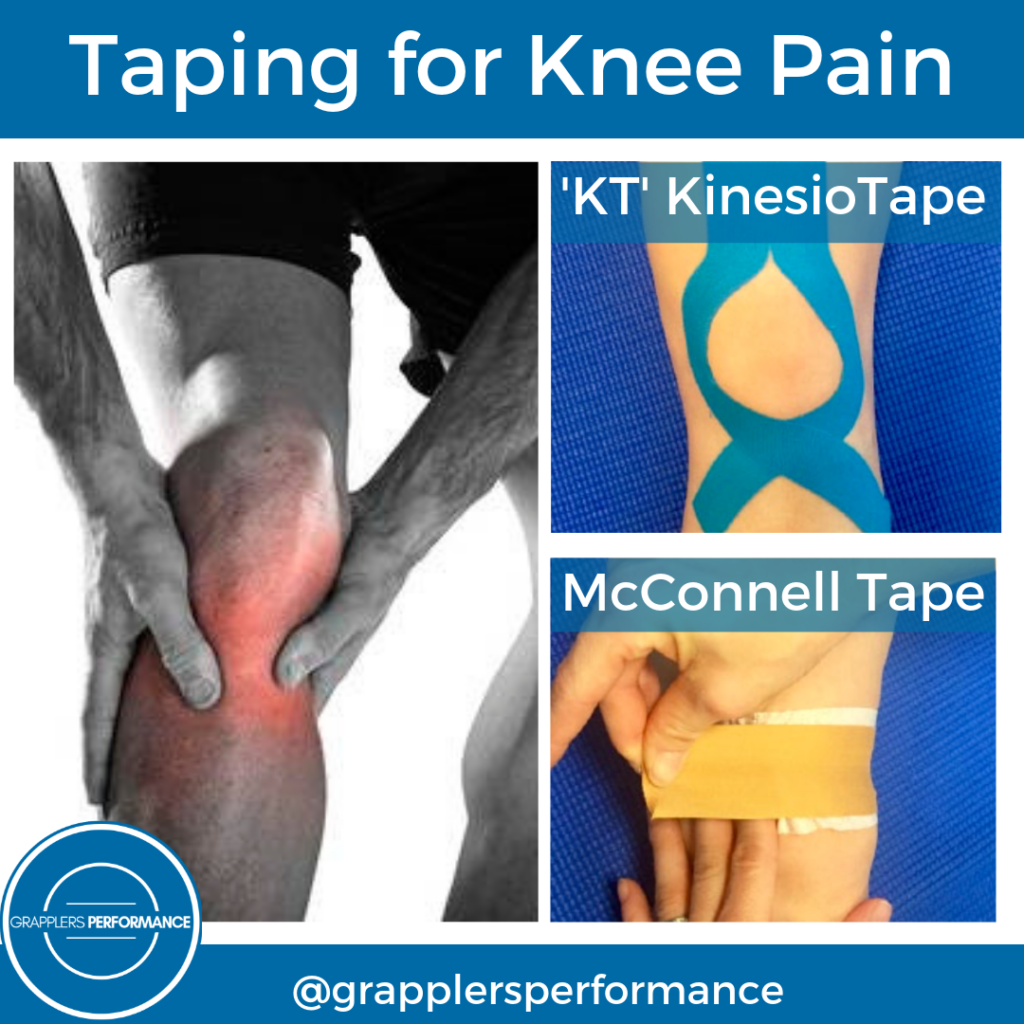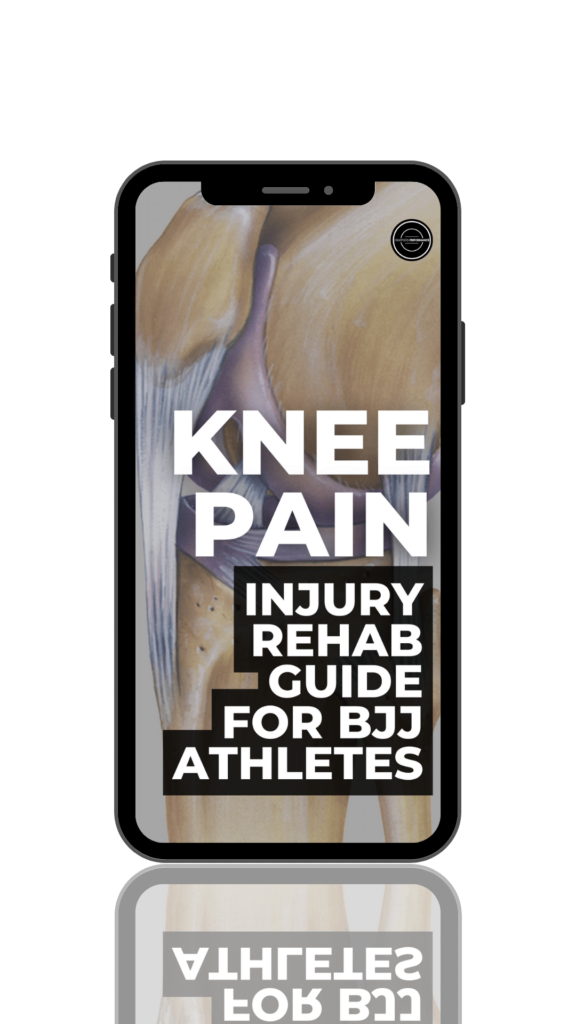Taping Techniques for Anterior Knee Pain

Most BJJ and grapplers will experience knee pain at some point in their career. Although there are many causes of knee pain, one of the most common conditions includes patellofemoral pain syndrome (PFPS). This is a just a fancy word to describe pain where the knee cap (patella) meets the thigh bone (femur). PFPS often leaves you with anterior knee pain during activities such as training, going up and down stairs, squatting, running, or long periods of sitting, due to increased compressive loading.
Now, if you have PFPS, can taping your knee help? This post is dedicated to 2 evidence-based taping techniques and whether or not they can help BJJ and grapplers struggling with PFPS.
Firstly, we will cover 2 popular taping techniques which can help ease your PFPS symptoms.
Secondly, we will discuss how and why specific taping can help PFPS.
To wrap it all up, my thoughts on when grappling athletes should use taping for knee pain.
2 Taping Techniques
To start, treating PFPS takes more than just tape. Many rehab professionals use tape often, especially with athletes to supplement training and competitions. Additionally, many rehab and physiotherapy programs can include knee-taping techniques to reduce pain, restore muscular balance, and re-establish functional activities.
Most commonly, two techniques are used, KT and McConnell. KT includes stretchy taps that adheres to the skin and moves in contour with the body. McConnell is more rigid and tends to hold strong in one specific place.
While taping for knee pain is common, what does the research say?

Some recent research by Logan et al.(2017)...
They systematically reviewed the body of evidence on taping, to provide recommendations on how to best use taping to reduce knee pain and enhance performance.
The research findings and conclusions are summarized below!
In total, 235 participants from 5 studies were included. Within all 5 studies, follow-up time ranged from 45 minutes after taping application to 1 year after intervention.
2 Taping strategies were mainly used:
- Kinesiology taping
- McConnell
The main results from the study showed…..
Taping alone does not significantly reduce pain. However, there is evidence taping combined with exercise provides superior reduction in pain compared with exercise alone.
Furthermore, PFPS rehabilitation programs should be multifactorial, with an emphasis on exercise therapy and education. While this is the case, utilizing tools, such as knee taping, can complement treatment regimens.
Additionally, groups including exercise were consistently superior, regardless of whether exercise was coupled with tension or placebo taping.
And finally, to help PFPS, taping overall was best utilized as a complement to traditional exercise therapy.
CONCLUSIONS:
First, knee taping can be an adjunct to traditional exercise therapy.
Second, the evidence does not support using only knee taping to resolve PFPS.
Finally, the best strategy is to use tape to allow pain-free movement and specific rehab exercises for PFPS.
How and Why Taping Helps
So..the research shows some taping can be helpful for knee pain. But, how does this work, and why would you use tape?
This can be put very simply.
As discussed earlier, the irritation from PFPS has to do with the knee cap and the thigh bone. Commonly, when increased tension or stress are placed on them. This often occurs when an athlete has weak hip muscles, leading to a lack of knee control with certain activities, movements, and positions during grappling training.
Both the KT and McConnell taping techniques aim to support and improve the quality of knee cap movement in relation to the thigh bone. With the extra support and aid, the irritating factor can be reduced, leading to pain reduction.
Now the research showed taping works best along with exercise, why?
Because, as described above, the actual problem often stems from hip weakness, not the knee itself. Corrective exercises to help strengthen specific hip muscles can improve knee control and reduce the irritable stressors being places on the knee joint in the first place. Taping the knees will only be a passive help to this process.
Taping for Grappling Athletes
Based on the research, taping could be a helpful tool for grappling athletes. Tape can temporarily reduce pain levels to help get through training and competition. However, it is important to know the tape won’t fix the original problem/cause. More so, corrective exercise can be more effective. Because, with PFPS, it is important to improve hip and knee movement quality and control.
On the other hand, tape can be helpful in the short-term. Both techniques, KT and McConnell have good effects when used, however for grappling, KT tape will likely be a better option. KT tends to hold on a bit longer and can easily bend and stretch to the demands of grappling training and competition.
Regain Control of Your Body
Free Knee Pain Rehab Guide
Regain control of your body & train how you want to with this step-by-step guide to alleviate aches & pains.
Thank you!
You have successfully joined our subscriber list.

Sources
- Logan et al. 2017. Systematic Review of the Effect of Taping Techniques on Patellofemoral Pain Syndrome. Sage.
